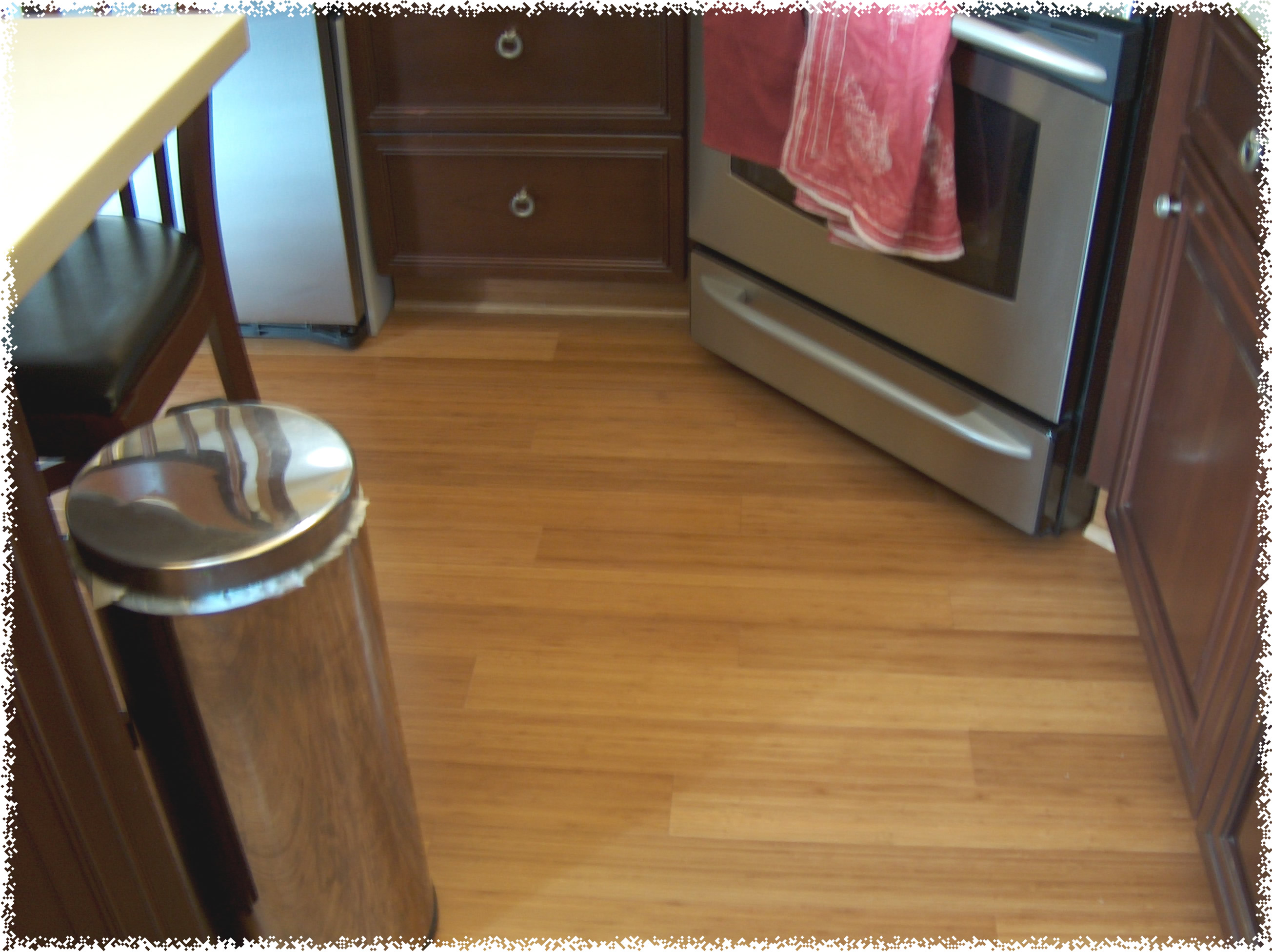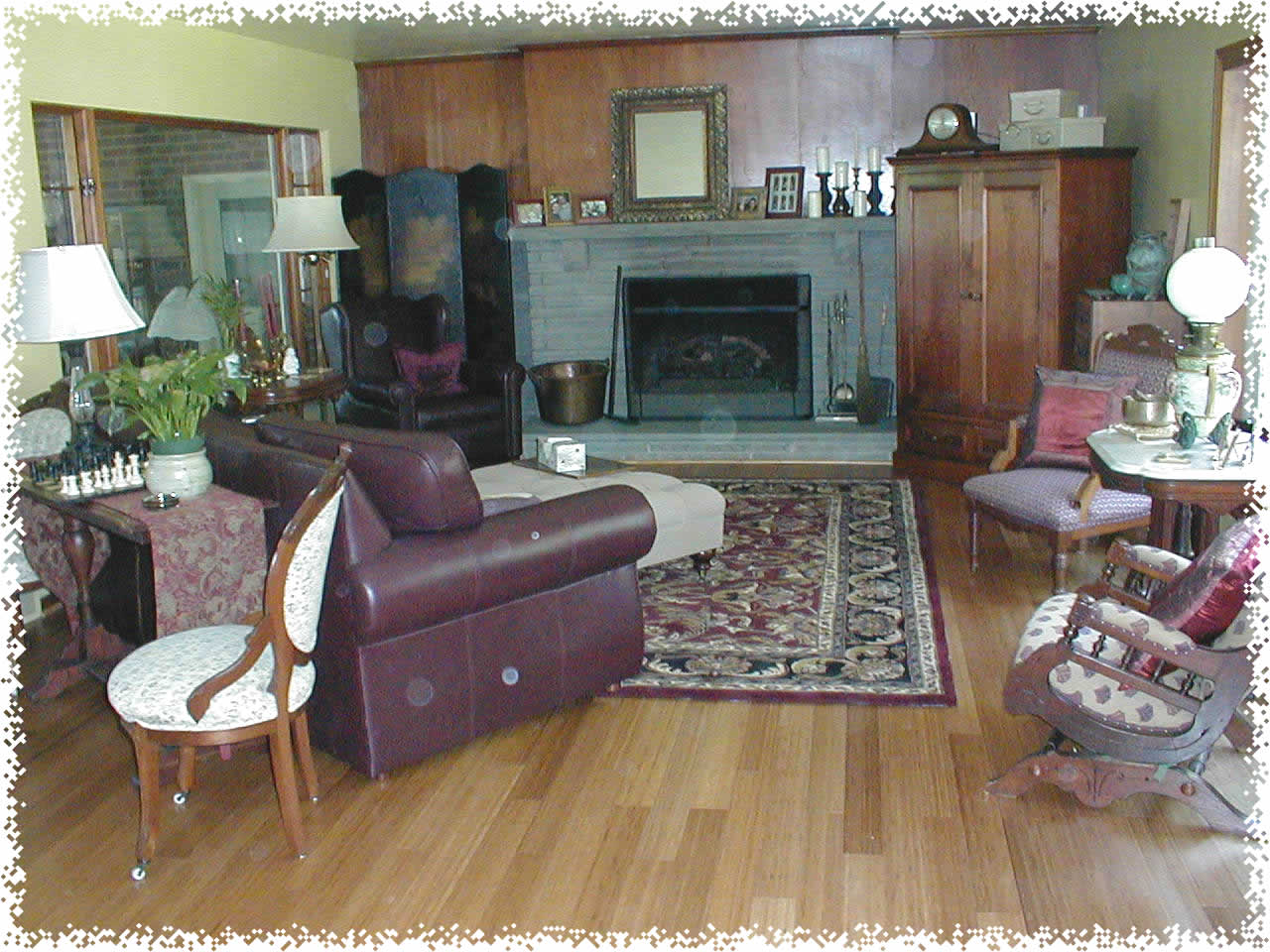

Location: Ross Township (Pittsburgh), PA
Installation: Summer 2006
The owner requested the installation of
approximately 750 square feet of bamboo flooring for the living room, dining
room and kitchen.

Bamboo flooring is made from 100% bamboo strips that are glued and compressed together to form interlocking or tongue and groove planks. The bamboo planks can be installed with a raw surface or with a polyurethane finish.
The bamboo strips can be formed in a horizontal or vertical format, creating a different pattern for each type. The color can vary from very light to very dark, depending of the degree of carbonization, that is, heating the sugars in the bamboo during the fabrication process creating the depth of color present.
One of the main advantages of using bamboo as a building product is that it is a renewable resource. Bamboo is a fast-growing grass and can be harvested every 3 to 5 years compared to traditional hardwood which may take 15-20 years to mature. Other advantages may include, but not be limited to:
COST: Bamboo is less costly than traditional hardwood flooring. Compare prices with local vendors.
DURABILITY: Bamboo is naturally moisture resistant and does not warp, buckle or twist due to its tropical characteristics. In addition, part of the manufacturing process includes lamination which increases resistance to warping. Because of its moisture resistance, bamboo flooring can be used in bathrooms, kitchens and laundry rooms where hardwoods typically shouldn't be used.
INSTALLATION: It can be nailed or stapled to a subfloor, glued straight onto concrete, or installed as a floating floor.